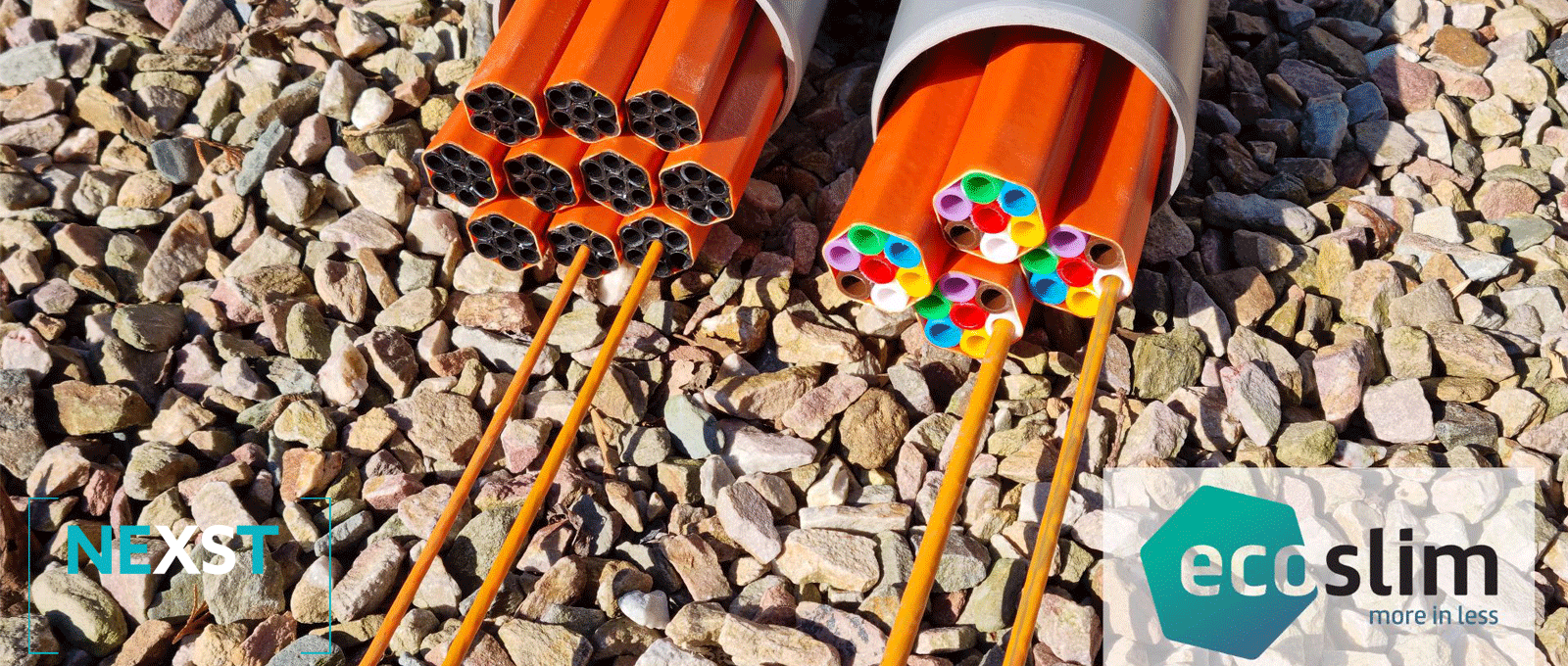Prysmian’s efficient, sustainable solution meets today’s FTTx challenges, such as limited installation space, expanding volumes, and a need for higher performance with lower environmental impact. By using Prysmian’s Sirocco HD and Sirocco Extreme cables (up to 864 fibres) and small-diameter Easenet microducts, Ecoslim reduces plastic use and makes network installation more sustainable and efficient.
Easenet microducts are made of up to 90% reclaimed HDPE. The result: up to 50% less virgin plastics usage than conventional ducts and up to 25% smaller diameter. Compared to traditional 14/10 mm diameter microducts with a larger fibre cable, Ecoslim™ is an undisputed champion in reducing CO2 emissions. Moreover, Ecoslim™ is one of the first optical network components that comes with an Environmental Product Declaration (EPD), for an independent comparison with conventional networks, proving up to 50% CO2 reduction along the value chain.





